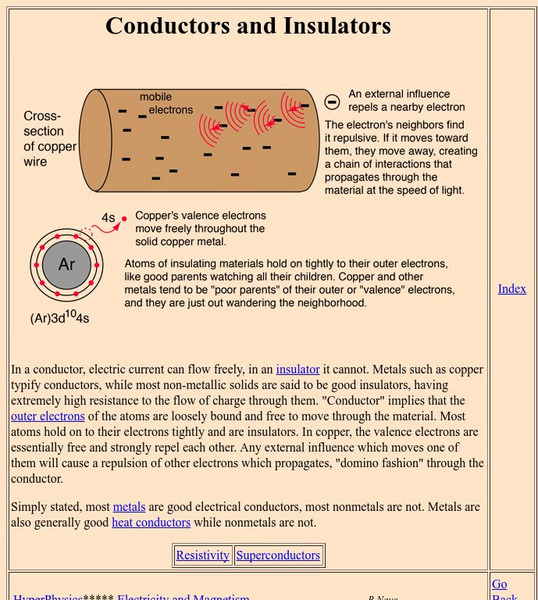Hi, what do you want to do?
Alabama Learning Exchange
Alex: "Electron" Ic Battleship
The students will play a game of Battleship on the Periodic Table to review electron configuration of the elements.This lesson plan was created as a result of the Girls Engaged in Math and Science University, GEMS-U Project.
Concord Consortium
Concord Consortium: Structure of an Atom
Observe the probable location of electrons around an atom. Trace the electrons over time to draw conclusions about where electrons are likely to be found around an atom's nucleus. How does the trace pattern relate to the electron cloud...
Concord Consortium
Concord Consortium: Atom and Ion Builder
Explore how changing the numbers of protons, neutrons, and electrons affect the type of atom.
CK-12 Foundation
Ck 12: Chemistry for High School
This digital textbook covers core chemistry concepts and includes interactive features, real-world examples, and videos.
South Carolina Educational Television
Know It All: Understanding Electricity | Nasa Online
If you want to understand electricity, you first need to know a little about matter, atoms and electrons.
Khan Academy
Khan Academy: Charge Transfer Processes
In this 4-question quiz, predict how charge gets transferred by conduction between two objects.
Discovery Education
Discovery Education: 3 M Young Scientist Lab: Balloon Electroscope
Use balloons to make an electroscope and witness the effect of static charges before your very eyes.
Concord Consortium
Concord Consortium: How Does an Object Become Charged?
Activity 2 in this module examines How do objects become charged? An investigation of where the electrons come from and where they go, when atoms become charged.
Concord Consortium
Concord Consortium: What Are Nature's Building Blocks?
Activity 4 What are the electrons? This question is answered in the context of Niels Bohr's model and the probability model of atomic structure.
Concord Consortium
Concord Consortium: What Are Nature's Building Blocks?
Activity 3 of this module investigates: How do we know what's inside an atom? From Ernest Rutherford's Gold Foil Experiment to his investigation of the Plum Pudding model, students become aware of the Nuclear Model of an Atom. Also in...
Concord Consortium
Concord Consortium What Are Nature's Building Blocks?
The module will develop, revise, and interpret representations of atomic structure and interactions of charges within atoms. The following activities will be explored: Activity 1. What are the particles that make up all substances and...
PBS
Pbs Learning Media: Balloon Charging Lab
Explore the behavior of electrons in conductors and insulators in this interactive simulation.
Khan Academy
Khan Academy: Electronic Structure Questions
Practice for the MCAT with these electronic structure questions.
Khan Academy
Khan Academy: Physical Processes: Electronic Structure: Electron Configurations Article
Electron configurations are a simple way of writing down the locations of all of the electrons in an atom. This article describes how this works.
Concord Consortium
Concord Consortium: What Makes Water Special?
Students will develop explanations connecting observations of water with properties that water exhibits through the following activities. Activity 1 How are water and other liquids similar? Activity 2 Why is water different from other...
Georgia State University
Georgia State University: Hyper Physics: Conductors and Insulators
This site from Georgia State University provides information on the distinction between conductors and insulators. Factors contributing to the insulating ability of materials are discussed.
Exploratorium
Exploratorium: Remote Control Roller
Students can make a empty soda can roll with an electrically charged balloon.
Lawrence Berkeley National Laboratory
Berkeley Lab: Basic Nuclear Science Information
Site provides the ABC's of nuclear science including radioactivity and gamma decay to fission and comic rays.
Wolfram Research
Wolfram Science World: Quantum Electrodynamics
In its description of quantum electrodynamics this definition provides the governing equations.
University of Guelph
The Carbon Family: Electron Binding Energies
A very advanced site on the elements of the Carbon Family. This site describes the electron binding energies of each in a detailed graph.
Simon Fraser University
Chem1 Virtual Textbook: Electrons
Acting as part of an overview on quantum theory, this section of the site deals with questions related to electrons, such as "If the electron cannot be localized, can it be moving?" and "Why does the electron not fall into the nucleus?"
Simon Fraser University
Chem1 Virtual Textbook: Particles and Waves
Acting as a subtopic of the General Chemistry Virtual Textbook's section on Atoms and the Periodic Table, this site discusses wavelength and the uncertainty principle. Information is also provided on de Broglie wavelength and electron...
Thomas Jefferson National Accelerator Facility
Jefferson Lab: All About Atoms
The three basic particles that make up atoms are defined and illustrated.
NASA
Nasa: La Exploracion De La Magnetosfera Terrestre
This site is a general overview of space research on the environment of the Earth in space.

















